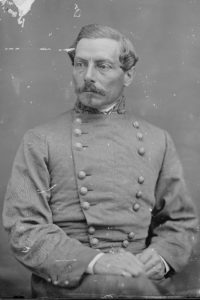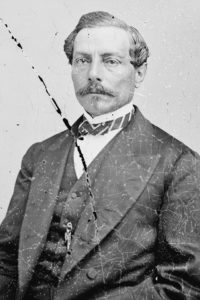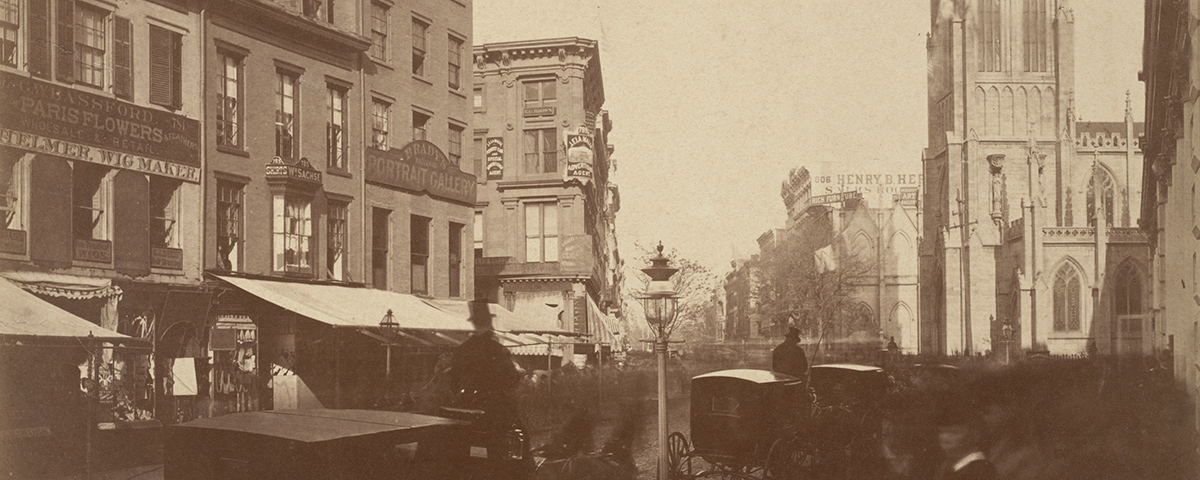The distinctive chair present in the images of the generals wearing Mansfield Lovell’s coat helped confirm the images were taken in Mathew Brady’s studio after the war. Consider the image of a Federal army officer standing dolefully with his left elbow resting on the distinctive chair, and look at the back of the chair. Then compare the image of Beverly Robertson with the table and chair.
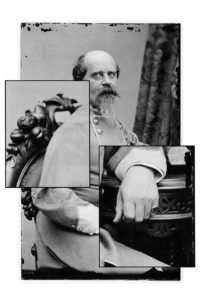
In wartime, Robertson’s hair and beard were dark, nearly jet black early in the war, and graying by the end of the conflict. In the images with the chair and table his hair and beard are very gray and thinning and the never-slender Robertson has grown far more corpulent, nearly busting out of his uniform. But of far greater importance was the realization that many of the images showing the table and chair can be found in online collections credited to the work of the Mathew Brady studios.
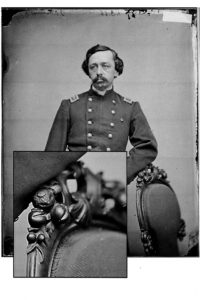
Brady images? Of Confederate generals? That could only mean one thing: the photos of these generals had to have been taken postwar. If that fact had ever been known at all it had been long ago lost to history. What a discovery! But I still had to verify it beyond doubt and also pin down the studio location. Brady operated studios in Washington and New York City. My first clue that these were taken in New York was that one of the women pictured with the table and chair is identified as “Mrs. Astor.”
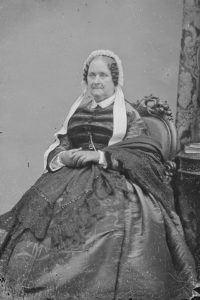
That name certainly conjures up New York associations. An e-mail quickly went out to the New York Historical Society and their reply confirmed – the table and chair were props strictly associated with Brady’s New York studio.
There, then, was the answer, and you can imagine what a profound ah-hah! moment it was to realize that former Confederate generals posed in uniform after the war in of all places New York City and at the studio of America’s most famous photographer. It explains why Beauregard was photographed in both military and civilian attire, with his hair groomed and falling in exactly the same manner. The striped tie also shows itself in the civilian photo and in the uniformed image it peeks up through the gap in the collar. It explains why a Federal officer had his picture taken in the same studio as Confederate officers. It explains how generals of the Eastern and Western Theaters were photographed in the same studio.
